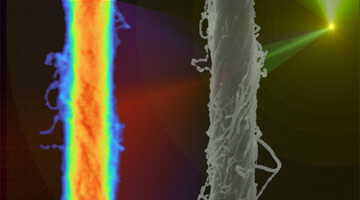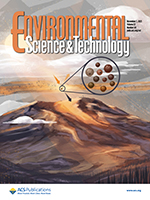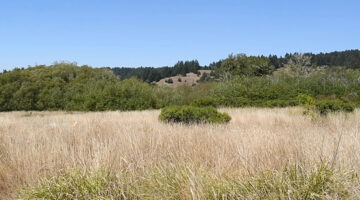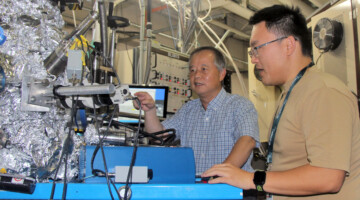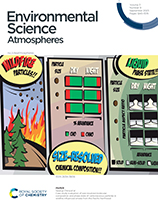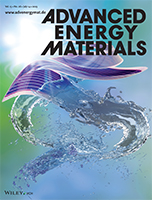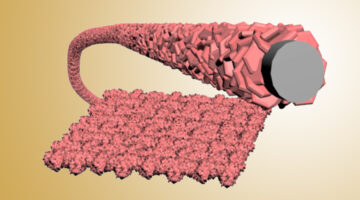Researchers studied atmospheric aerosols influenced by wildfires in the Pacific Northwest. They examined the connection between particle size, chemical composition, and phase state, in particles collected during the day and at night. The information is important for modeling the effects of wildfire smoke on atmospheric properties. Read more »
How Processing Affects Structure in Composite Nanotube Yarns
Using the ALS, researchers found quantitative correlations between processing parameters and the structure of ultrafine, polymer-reinforced carbon-nanotube fibers. The work will facilitate the production of high-strength materials, including those needed for positioning target capsules for fusion research at the National Ignition Facility. Read more »![]()
![]()
Optical Properties of Individual Tar Balls in the Free Troposphere
Tar balls are found in biomass-burning smoke, and their sunlight-absorption properties are highly uncertain. This study investigates the optical properties of individual tar balls in the free troposphere to better understand their influence on climate. Read more »
Improving Carbon Retention in Grassland Soil from Point Reyes
Soil organic carbon directly influences the life-supporting services provided by soils, including the production of food and the regulation of atmospheric carbon dioxide. To better understand how minerals such as calcium affect carbon accumulation in soil, researchers studied soils collected from Point Reyes National Seashore. Read more »![]()
HyMARC Aims to Hit Targets for Hydrogen Storage Using X-Ray Science
Understanding how materials absorb and release hydrogen is the focus of the Hydrogen Materials Advanced Research Consortium (HyMARC). At the ALS, the HyMARC Approved Program was recently renewed, underscoring the key role that soft x-ray techniques have played in addressing the challenges of hydrogen storage. Read more »
Eco-Friendly Processing of Organic Photovoltaics
Researchers controlled the mixing of electron-donating and -accepting constituents of an organic photovoltaic (OPV) material made using a process that replaces toxic solvents with water. With efficiencies comparable to less eco-friendly OPVs, this material shows promise for many advanced device and building applications. Read more »![]()
![]()
Case study evaluation of size-resolved molecular composition and phase state of carbonaceous particles in wildfire influenced smoke from the Pacific Northwest
Wildfires are significant sources of carbonaceous particles in the atmosphere. Given the dependence of atmospheric processes on particle physical and molecular properties, the interplay between particle size, phase state and chemical composition is investigated here for aerosols influenced by a 2021 Pacific Northwest wildfire event. Read more »
Toward High Efficiency Water Processed Organic Photovoltaics: Controlling the Nanoparticle Morphology with Surface Energies
Researchers achieve power conversion efficiencies approaching 10% by careful control of the nanoparticle and thin film morphologies thanks to surface energy considerations. This approach opens the route to low environmental footprint photovoltaics. Representing the promise of this sustainable direction in organic photovoltaics, the image shows the deposition of the active layer from water-based nanoparticles inks. Read more »
Vestiges of the Early Solar System in Ryugu Asteroid
Samples returned to Earth from the asteroid Ryugu revealed that the building blocks of life formed 4.6 billion years ago in the extreme cold of space, followed by reaction with water. The dark, coal-like organic matter in the carbonaceous asteroid could have contributed to the formation of habitable planetary environments. Read more »![]()
![]()
Increasing the Energy Density of Hybrid Supercapacitor Electrodes
Hybrid supercapacitors (HSCs) integrate the merits of batteries with those of supercapacitors. However, the fraction of active material in HSC electrodes has remained too low for commercial requirements. Now, researchers have found a clever way to increase the active-mass ratio to achieve dramatic improvements in key measures. Read more »
- 1
- 2
- 3
- 4
- Next Page »

